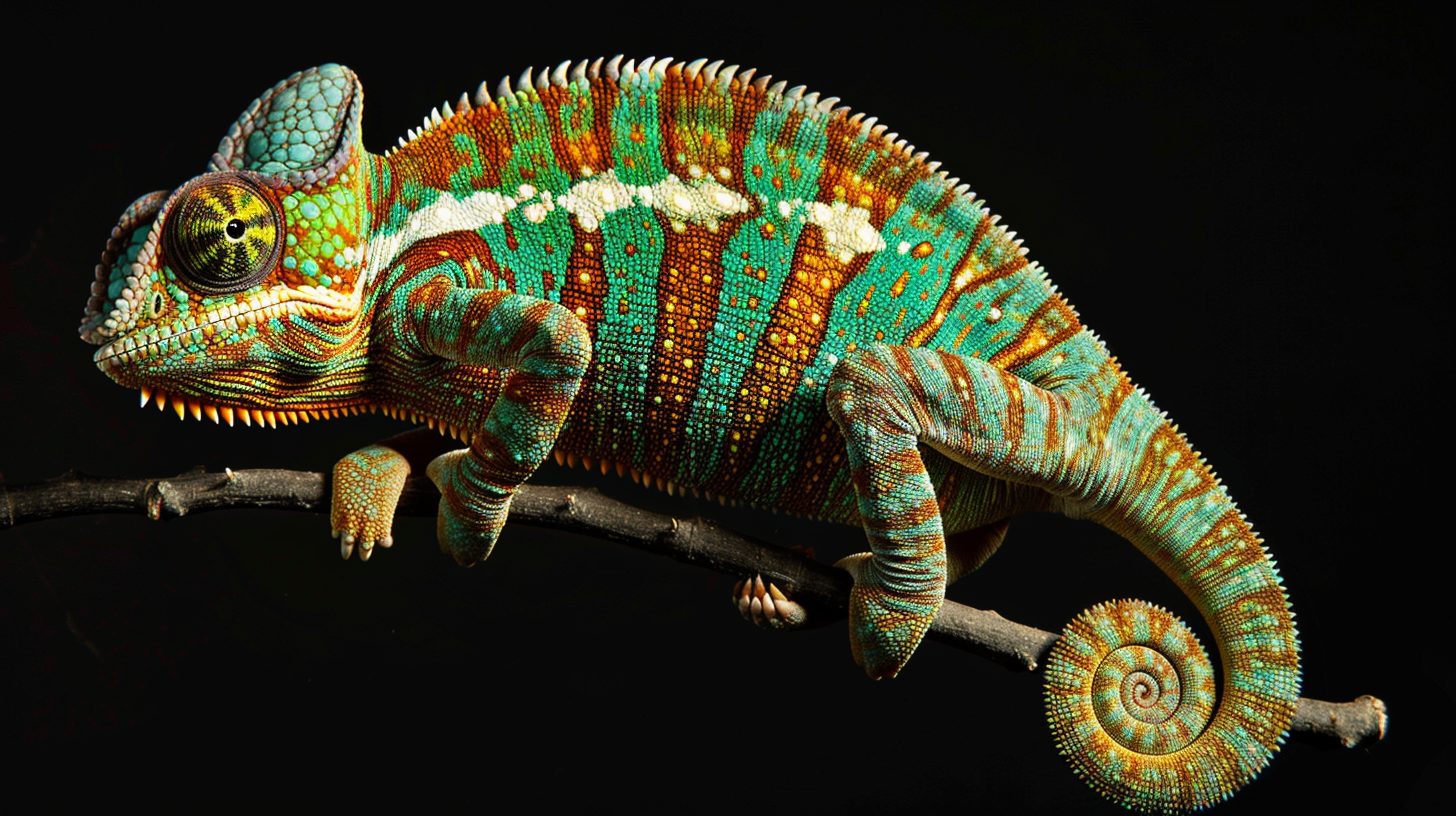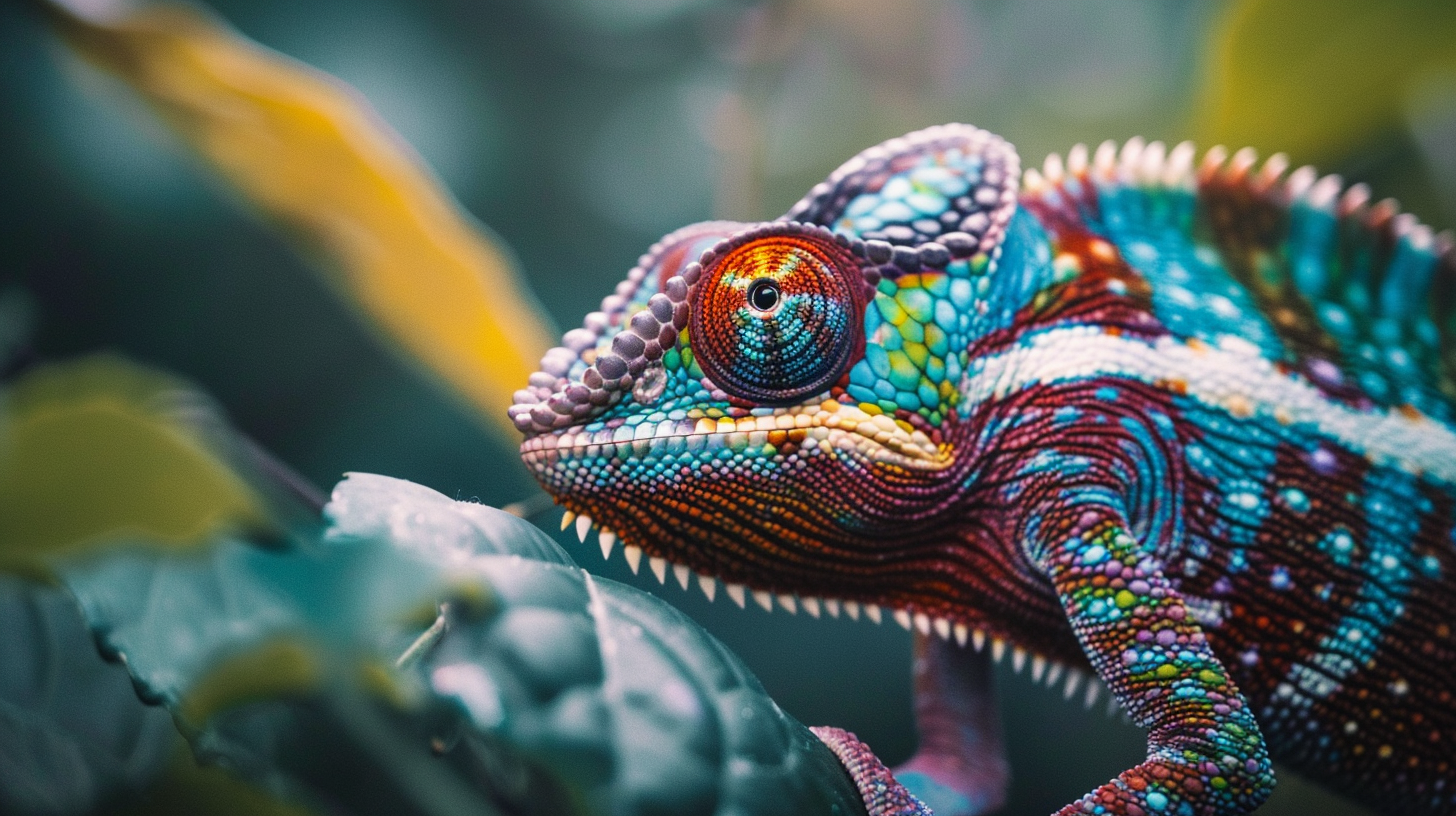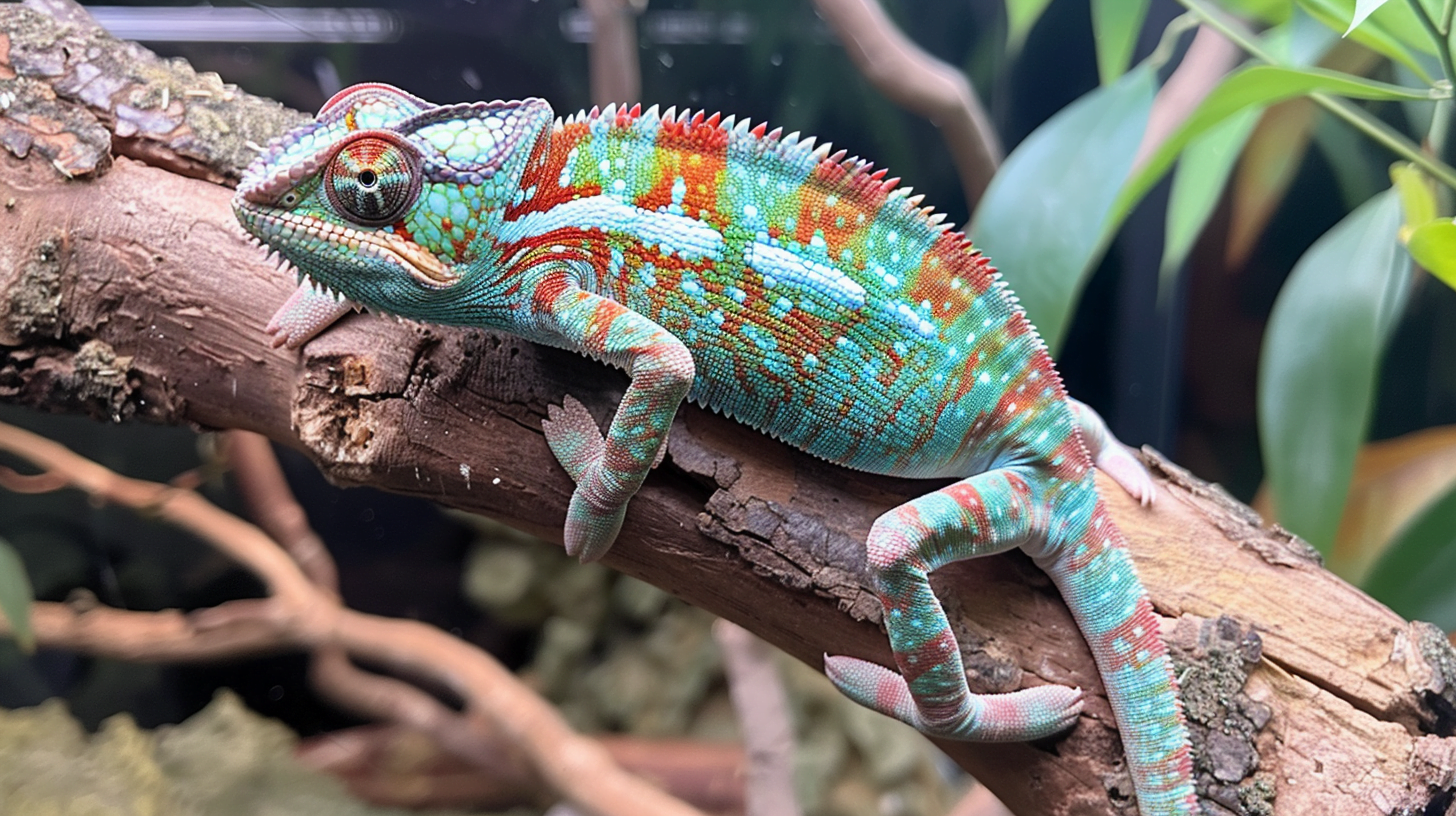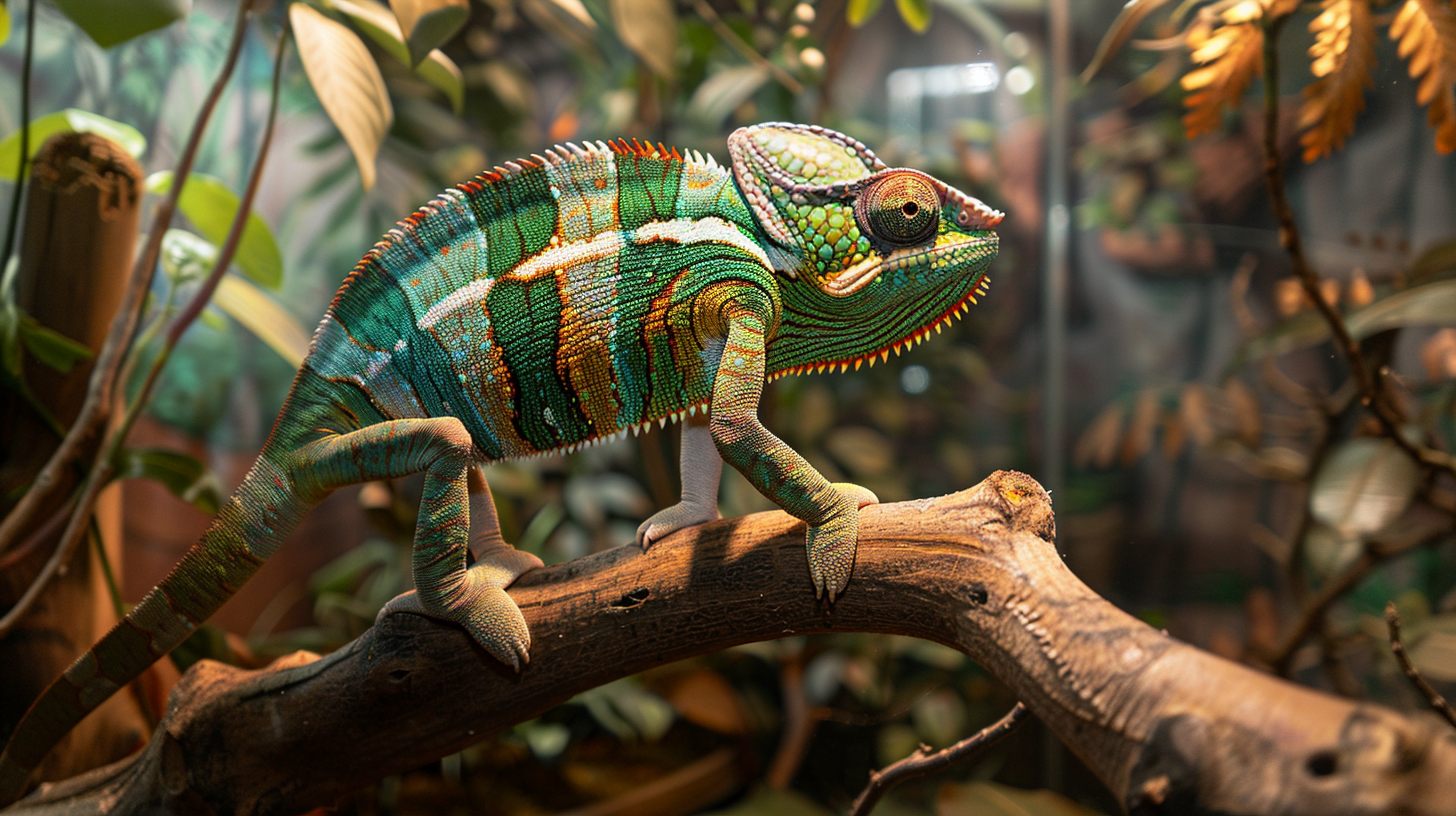Introduction
Chameleons captivate us with their vibrant colors and unique adaptations. But one question often arises: Are chameleons nocturnal? This article delves into the fascinating world of chameleons, exploring their activity patterns, sleep behavior, and the factors influencing their daily routines. By understanding these aspects, we can better appreciate these remarkable reptiles and provide optimal care for them in captivity.
What Does Nocturnal Mean?
Definition of Nocturnal
Nocturnal animals are those that are active during the night and rest during the day. This behavior helps them avoid predators and extreme daytime temperatures. Examples of nocturnal animals include owls, bats, and many species of rodents.
Diurnal vs. Nocturnal vs. Crepuscular
- Diurnal: Active during the day (e.g., humans, eagles)
- Nocturnal: Active during the night (e.g., owls, bats)
- Crepuscular: Active during twilight (dawn and dusk) (e.g., deer, some species of rabbits)
Understanding these terms helps us categorize animal behavior and better understand chameleons’ activity patterns.
Chameleon Behavior and Activity Patterns
General Chameleon Behavior
Chameleons are a diverse group of lizards known for their ability to change color, their independently moving eyes, and their long, sticky tongues used for catching prey. They inhabit various environments, from rainforests to deserts, and have adapted to these habitats in unique ways.
Are Chameleons Nocturnal or Diurnal?
Most chameleons are diurnal, meaning they are active during the day and rest at night. Scientific studies and observations have shown that chameleons spend their days hunting for insects, basking in the sun to regulate their body temperature, and engaging in social behaviors. However, there are variations among different species, and some may exhibit crepuscular activity, being more active during dawn and dusk.
Factors Influencing Chameleon Activity
Environmental Factors
Chameleons’ activity patterns are heavily influenced by their environment. Factors such as habitat, climate, daylight, and temperature play crucial roles in determining when chameleons are active. For instance, in hotter climates, chameleons may seek shade during the peak heat of the day and become more active during cooler parts of the day.
Predation and Survival Strategies
Chameleons have evolved various strategies to avoid predators. Their ability to change color helps them blend into their surroundings, making them less visible to predators. Additionally, their activity timing can be a survival strategy. By being active during the day, they can better utilize their camouflage and avoid nocturnal predators.
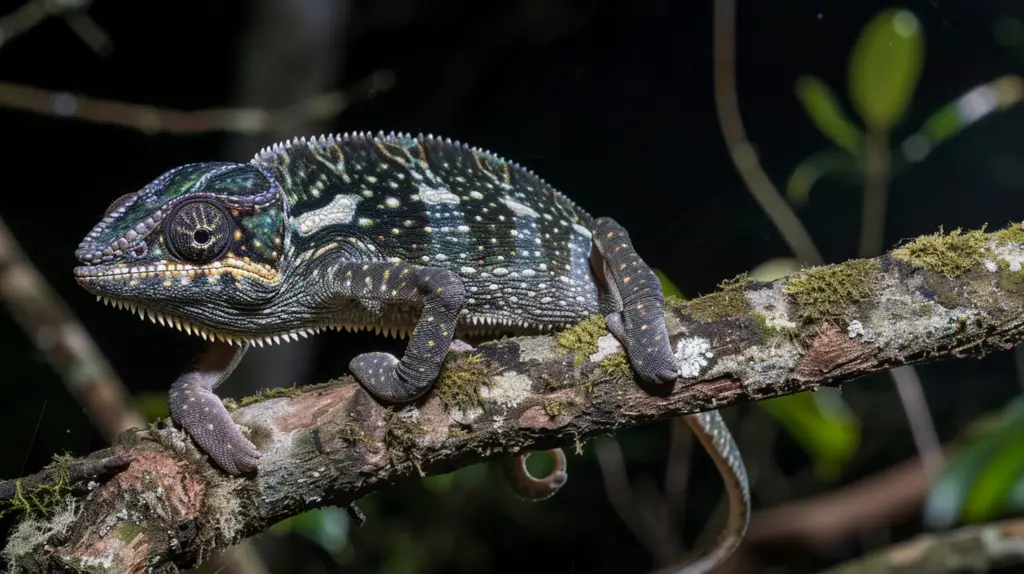
Chameleon Sleep Patterns
How Do Chameleons Sleep?
Chameleons have unique sleep behaviors. They often sleep in elevated positions, such as on branches, where they can remain safe from ground-dwelling predators. During sleep, chameleons may exhibit a lighter color, which helps them blend into their surroundings even while resting.
Do Chameleons Sleep at Night?
Yes, chameleons typically sleep at night. Their sleep cycles are influenced by the natural light-dark cycle of their environment. In captivity, it’s essential to mimic these conditions to ensure the chameleon maintains a healthy sleep pattern. Differences between wild and captive chameleons can arise due to variations in light exposure and environmental conditions.
Chameleon Care in Captivity
Creating the Right Environment
To ensure the well-being of pet chameleons, it’s crucial to create an environment that mimics their natural habitat. This includes providing appropriate lighting and temperature conditions. UVB lighting is essential for chameleons to synthesize vitamin D3, which is vital for calcium metabolism.
Understanding Your Pet Chameleon’s Activity
Observing your chameleon’s behavior can provide insights into its health and well-being. If your chameleon is active during the day and rests at night, it indicates a healthy routine. Adjusting care routines based on observed activity patterns can help maintain your chameleon’s health.
Common Myths About Chameleon Behavior
Myth: Chameleons Change Color to Match Their Surroundings
While chameleons can change color, this ability is primarily used for communication and temperature regulation rather than camouflage. Color changes can indicate a chameleon’s mood, stress level, or readiness to mate.
Myth: All Chameleons Are Nocturnal
This is a common misconception. As discussed, most chameleons are diurnal, being active during the day and resting at night. Understanding this helps in providing proper care and setting realistic expectations for chameleon behavior.
Conclusion
Summary of Key Points
Chameleons are primarily diurnal creatures, active during the day and resting at night. Their behavior is influenced by environmental factors, predation risks, and survival strategies. Understanding these patterns is crucial for both appreciating these fascinating reptiles and providing optimal care in captivity.
Final Thoughts
Observing and learning from chameleons can be a rewarding experience. By understanding their behavior, we can ensure their well-being and enjoy their unique characteristics. Feel free to share your experiences and ask questions to further explore the world of chameleons.
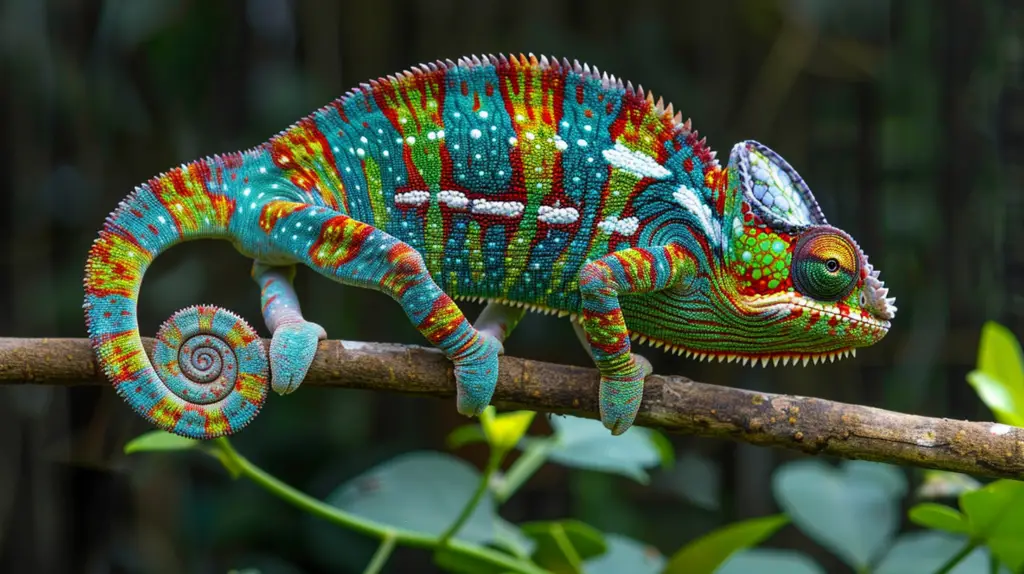
FAQs About Chameleon Behavior
Are Chameleons Active at Night?
No, most chameleons are not active at night. They are diurnal and rest during the night.
How Can I Tell If My Chameleon Is Healthy?
Signs of a healthy chameleon include bright eyes, active behavior during the day, a healthy appetite, and vibrant coloration. Regular observation and proper care are essential.
What Should I Do If My Chameleon Is Inactive?
If your chameleon is unusually inactive, it could be due to stress, illness, or improper environmental conditions. Ensure the habitat is suitable and consult a veterinarian if necessary.
